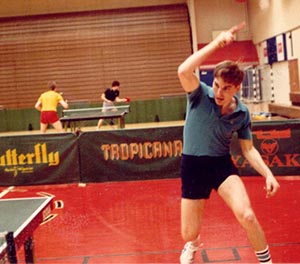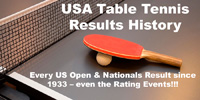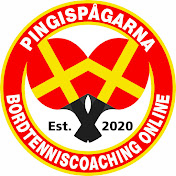Tip of the Week
Beetle Baily Cartoons
Beetle Bailey ran a table tennis cartoon yesterday (Sunday). Cartoonist Mort Walker has long had a partnership with table tennis, regularly running cartoons, often featuring epic matches between Beetle and Sarge. In the early years, apparently Sarge would win, but in recent years it's been all Beetle. Below are all the times they've featured table tennis that I can find. Considering the cartoon has been running continuously since 1950, I'm pretty sure there are plenty more, but they didn't start putting them online at beattlebailey.com until 1996. I'm determined to find them all!!! I found mention of a cartoon from Aug. 25, 1975 that is titled, "Blast it! I lost to Sarge in Ping-Pong Again!", and described as "The Chaplain counsels Beetle on his anger...and his ping-pong game," but I can't find it online. So I just ordered the 1975 Beetle Bailey collection (only cost about $7, including shipping), and will scan and put that online when it arrives. (NOTE added later - I received the comic book in the mail, but it was the wrong one, so I still haven't found this one.) (Yeah, today's blog is a bit short - very busy on various USATT and MDTTC issues, and editing the new coaching book by Samson Dubina. But I think there's enough here to keep you occupied.) (NOTE - I'll likely update this periodically with newer ones.)


 Photo by Donna Sakai
Photo by Donna Sakai


